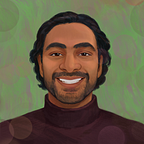Perspectives on designing for pedagogical innovation
Background and context
Earlier in my career, I had the opportunity to work with the Office of Regional and International Community Engagement (ORICE) at the University of British Columbia to explore the use of VR to engage a greater number of students at university with global community development challenges. The office was interested in increasing the impact of its programs and integrating VR storytelling experiences to support case studies in the classroom. When I started out my research, I first had to orient myself with why VR for education in the realm of community engagement makes sense. To do this, I was introduced to two important terms — wicked problems and systems thinking — which are crucial to understanding why Virtual Reality can be useful in unpacking complexity.
Wicked problems are problems so interwoven that we need multiple interventions rather a single solution to approach them. Such problems are very different from scientific problems as the complexity is added due to social, political and cultural factors and as such, it is essential to understand multiple perspectives to even begin to understand a wicked problem. VR was being used in the courses as a tool to help students empathize with the community, situate themselves, and familiarize themselves with the stakeholders to then leverage this understanding to further their learning using strategic design methodologies.
Integrating VR into the curriculum
An important lesson I learnt early on in my work was that innovating for education isn’t the same as innovation for a product. That is because pedagogical innovation is a constant process which should be looked at as a practice rather than as a deliverable. Technology, as such, can only aid the teaching process but not replace the teacher. For me, this was an important learning because it changed how I was thinking of the application of VR in the classroom context.
My biggest learning from the conversations with the mentors I had was that the stories that I will capture in the field are owned and will always be owned by the locals in that community and that consent is essential, even if the end goal is to offer help and solutions.
In the month of August 2018, I had the opportunity to travel to Bangalore, India to capture the digital assets for the course and work closely with the partner community organization, SELCO Foundation, to get contextual understanding before entering the field for shooting. This again was essential because often as we go into the field to capture the lives of the ‘others’, we often collude the reality with our biases and snatch the authenticity from the work. My biggest learning from the conversations I had with the mentors from SELCO was that the stories that I will capture are owned by the locals in that community and that consent is essential, even if the end goal is to offer help and solutions.
For the next two weeks, I travelled across the Karnataka state to capture VR assets with the understanding that I am an outsider entering their land and homes and that I need to be mindful of the power and privilege I carry. Among other things, I learnt that designing for pedagogical innovation, especially in the realm of community development, requires recognition of intentionality by which I mean coming to terms with the fact it’s not just me who is learning about the issue at hand but also that my work is a purposeful attempt to capture the issues and communicate that to another audience.
Capturing the footage was just step one in the process. The second step was to liaise with the SELCO staff to dig out the wickedness in each of the case briefs for the course. This again required a shared understanding of how students will benefit from the content being designed. The building of this shared understanding took multiple calls and upwards of 4 months to edit and shape the digital assets while attempting to preserve the authenticity of the captured accounts.
I needed to be mindful of the power and privilege I carried.
I experienced first hand what the 5 stages of the design thinking process look like in practice when there are human lives and not just dollars at stake. It was also the first time my design process involved multiple stakeholders in various capacities.
I learnt immensely from this experience so far and it gives me immense satisfaction that my contribution is being actively used by fellow students to expand, and possibly change, their view of the world.
